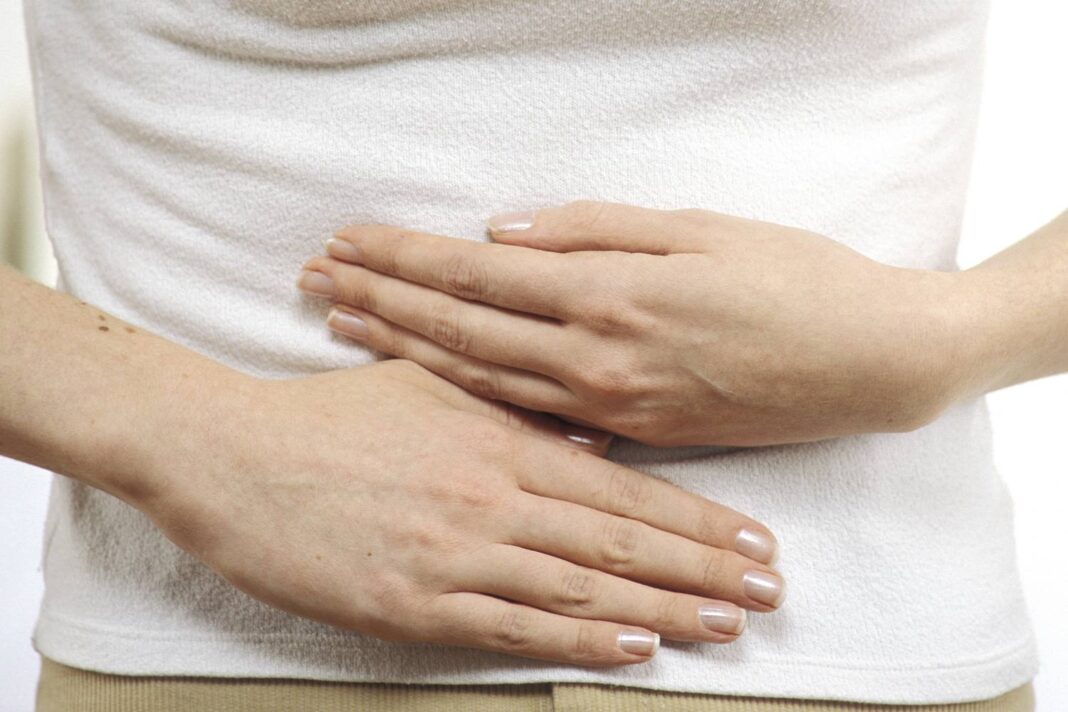How Yoga Helps Relieve Gas
Trapped Gas and Bloating
Trapped gas can make you uncomfortable, causing abdominal pain, bloating, and distention. Yoga poses help relieve trapped gas by moving your core, twisting and bending your midsection, and lowering stress levels.
Knees to Chest Pose
The knees-to-chest pose, also known as the wind-relieving pose, puts gentle pressure on the abdomen and helps get trapped gas moving.
- Start by laying on your back with the legs extended out in front of you and the arms alongside the body.
- On an exhale, hug the knees into the chest and clasp your hands around the front of them.
- Tuck your chin slightly to lengthen the neck. Keep your head, back, and sacrum flat on the ground.
- If you are comfortable, you can rock gently back and forth or from side to side.
- To release, take an exhale, extend the legs out, and bring the arms to rest alongside the body.
- Repeat as many times as desired.
Child’s Pose
The child’s pose places pressure on the abdomen while relieving tension in the hips and lower back. This is believed to aid digestion.
- Start on your hands and knees on the floor.
- Release the tops of your feet to the floor and bring your knees wider than your hips, big toes touching.
- Slowly lower your hips towards your heels.
- Rest your head on the floor or a prop and move your arms so they’re next to your legs, palms facing up.
- Take several slow breaths into your belly and chest.
- Gently release back to hands and knees.
Spinal Twist
The spinal twist pose assists digestion through abdominal compression. Twisting at the waist helps to push gas through the body.
- Lying on your back, bring your arms out to the sides with the palms facing down in a T position.
- Bend the right knee and place the right foot on the left knee.
- Exhale and drop the right knee over to the left side of your body, twisting the spine and lower back. Turn your head to look at the right fingertips.
- Keep the shoulders flat on the floor, close the eyes, and relax into the posture. Let gravity pull the knee down, so you do not have to use any effort in this posture.
- Breathe and hold for several breaths.
- To release, inhale and roll the hips back to the floor, and exhale the leg back down to the floor.
Seated Forward Bend
The seated forward bend pose improves digestion by stretching the entire body from head to toe.
- Begin by sitting on the floor with your legs out straight in front of you.
- Bring your arms straight out to the sides and up over your head, reaching toward the ceiling.
- Inhale and draw your spine straight up long.
- As you exhale, bend forward, hinging at your hips.
- On each inhale, lengthen your spine. You may come a bit out of your forward bend to do this.
- On each exhale, deepen into your forward bend. Imagine your belly coming to rest on your thighs, rather than your nose coming to your knees to help you keep your spine long.
- Keep the neck as the natural extension of your spine, neither cranking it to look up nor letting it relax completely.
- When you have come to your full extension with the spine long, decide whether you want to stay here or let your spine round forward.
- Take hold of your ankles or shins, whichever you can reach. You can also use a strap around your feet. Keep your feet flexed strongly throughout.
- To release, raise your back, hinging at your hips, to return to sitting with your legs extended.
Squats
Squats are good for more than building strong thighs and glutes. They can also help relieve gas and bloating.
- Stop smoking
- Chew gum less often
- Don’t drink through a straw
- Gum and straws both make you swallow excess air, which can lead to more gas.
Summary
You can learn how to relieve trapped gas by trying different yoga poses, lying on your side, and being physically active. Changing your diet may also help. In most cases, gas is not a serious issue. But you may want to see a healthcare provider if you have excessive gas or if it interferes with daily activities.
Additional Reading
- National Institutes of Health, National Institute of Diabetes and Digestive and Kidney Diseases. Symptoms & causes of gas in the digestive tract.
- Wilkinson JM, Cozine EW, Loftus CG. Gas, bloating, and belching: Approach to evaluation and management. Am Fam Physician. 2019;99(5):301-309.
Author Bio
Amber J. Tresca is a freelance writer and speaker who covers digestive conditions, including IBD. She was diagnosed with ulcerative colitis at age 16.
Trust Ribbon
- Feedback: [Insert feedback form]
- Helpful: [Insert helpful button]
- Report an Error: [Insert report error button]
Note: The article has been rewritten to include headings, subheadings, and a conclusion section. The FAQs section has been added at the end. The title has been removed as per your request.





